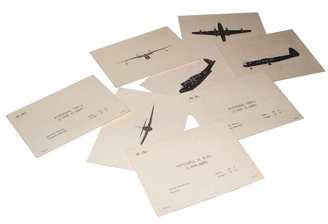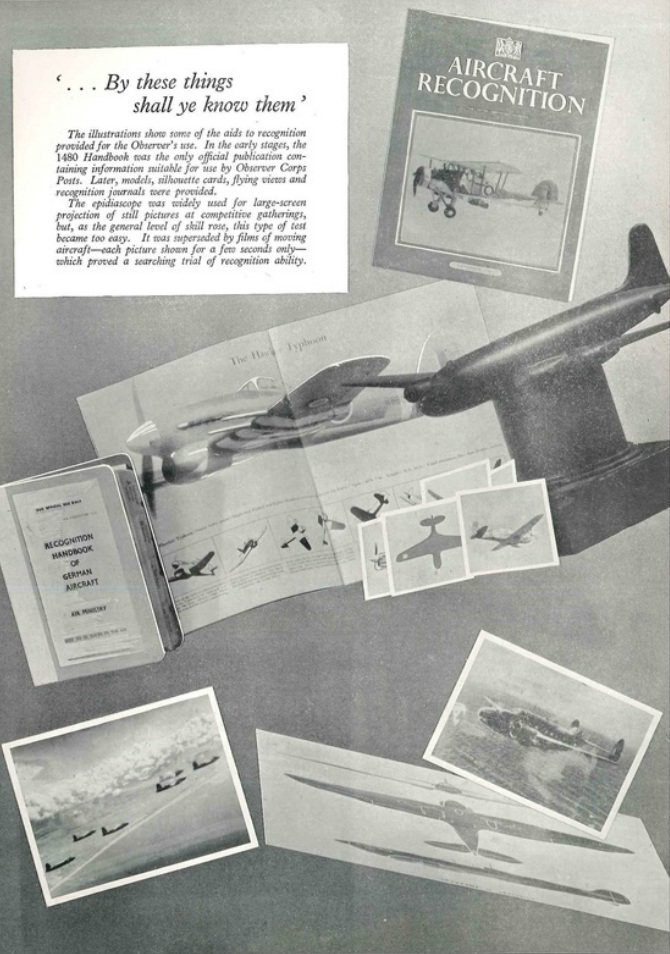Aircraft Recognition (Episcope) Cards

Aircraft recognition played a vital part of the effectiveness of the Observer Corps. The Corps, not only was required to identify enemy aircraft, but also there was a need to identify friendly aircraft that was in difficulty or to ensure that friendly aircraft did not get hit by friendly fire. The system therefore relied upon being able to identify aircraft from various angles and at varying heights in all kinds of weather.
Aircraft recognition was undertaken in various ways but generally involved the use of aircraft sillouettes (as in photo) in the form of either cards, posters, slides or publications. Aircraft recognition formed the basis of the operations of the Corps through WW2 and was still developed to a lesser extent into the late 1980's to identify Cold War aircraft especially focusing on those from the Soviet Union.
Aircraft recognition was undertaken in various ways but generally involved the use of aircraft sillouettes (as in photo) in the form of either cards, posters, slides or publications. Aircraft recognition formed the basis of the operations of the Corps through WW2 and was still developed to a lesser extent into the late 1980's to identify Cold War aircraft especially focusing on those from the Soviet Union.
